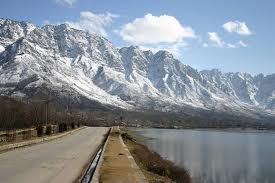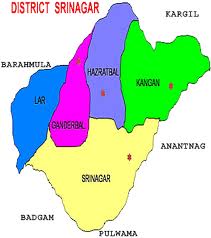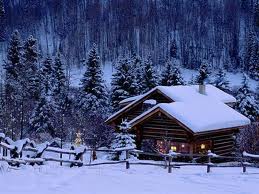Srinagar Tourism | Hotels in Srinagar |Srinagar Map
About Srinagar:
Srinagar is the capital of the northernmost Indian state of Jammu and Kashmir. It is situated in Kashmir Valley and lies on the banks of the Jhelum River, a tributary of the Indus. While not the largest, it is one of the biggest cities in India without a Hindu majority.The city is famous for its lakes and houseboats. It is also known for traditional Kashmiri handicrafts and dry fruits. It is also the headquarters of Srinagar district.
Etymologically Srinagar is composed of two Sanskrit words, namely, Sri (meaning abundance and wealth) and Nagar, which means a city. Thus, the word Srinagar signifies a place of wealth and abundance. Sri is also the name of a goddess Lakshmi of Hindus. Sri is also used for, sun, hence the word could mean, city of the sun.
One theory of the origin of the name is that a Pandava King Ashoka (not to be confused with Maurya Ashoka) built the city of Srinagari (Srinagar).Another theory is that in Kashmir Mauryan Emperor Ashoka founded the original city of Srinagar, then situated on the site of the present village of Pandrathan, 3 miles to the North of the existing capital.
History of Srinagar:
Present day Srinagar has been known by different names.The city was founded by the King Pravarasena II over 2,000 years ago,named it Parvasenpur, and the city of Srinagar has a long history, dating back at least to the 3rd century BC. The city was then a part of the Maurya Empire, one of the largest empires of the Indian subcontinent. Ashoka introduced Buddhism to the Kashmir valley, and the adjoining regions around the city became a centre of Buddhism. In the 1st century, the region was under the control of Kushans and several rulers of this dynasty strengthened the Buddhist tradition.Vikramaditya (of Ujjain) and his successors probably ruled the regions just before the city fell to the control of the Huns in the 6th century, and Mihirkula was the most dreaded ruler of the city and the valley.
The Government of India, immediately air-lifted Indian troops to Srinagar, and defence of the city was further strengthened against further attacks. Meanwhile, the matter was escalated to the United Nations and a cease fire was imposed under its authority. These events resulted in the division of the state into an Indian administered region and a Pakistani administered region.
Geography of Srinagar:
Location: 34°5'23?N 74°47'24?E
Highest temperature: 37 °C (99 °F); lowest -14 °C (6.8 °F)
The city is located on both the sides of the Jhelum River, which is called Vyath in Kashmir. The river passes through the city and meanders through the valley, moving onward and deepening in the Wular Lake. The city is famous for its nine old bridges, connecting the two parts of the city.
Hokersar is a wetland situated near Srinagar—the capital of Indian Kashmir. Thousands of migratory birds come to Hokersar from Siberia and other regions in the winter season. Migratory birds from Siberia and Central Asia use wetlands in Kashmir as their transitory camps between September and October and again around spring. These wetlands play a vital role in sustaining a large population of wintering, staging and breeding birds.
Hokersar is 14 kilometres (8.7 mi) north of Srinagar, and is a world class wetland spread over 13.75 square kilometres (5.31 sq mi) including lake and marshy area. It is the most accessible and well-known of Kashmir's wetlands which include Hygam and hygam is the best place of situation, Shalibug and Mirgund. A record number of migratory birds have visited Hokersar in recent years. An estimated quarter of a million birds have already been spotted at Hokersar in the current season.
Birds found in Hokersar—Migratory ducks and geese which include Brahminy Duck, Tufted Duck, Gadwall, Garganey, Greylag Goose, Mallard, Common Merganser, Northern Pintail, Common Pochard, Ferruginous Pochard, Red-Crested Pochard, Ruddy Shelduck, Northern Shoveler, Common Teal, and Eurasian Wigeon.
Culture of Srinagar:
Like the state of Jammu and Kashmir, Srinagar too has a distinctive blend of cultural heritage. Holy places in and around the city depict the historical cultural and religious diversity of the city as well as the Kashmir valley.There are many religious holy places in Srinagar.
Gurudware Chatti Patshai srinagar,Gurudwara Saheed Bungai Srinagar,Gurudwara Kalam Pura Baramulla district,Gurudwara Param Pela Uri,Gurudwara Shadi Marg,Hazratbal Shrine.
Climate of Srinagar:
Srinagar has a humid subtropical climate (Köppen Cfa), with a climate much cooler than what is found in much of the rest of India, due to its moderately high elevation and northerly position. Winters are cool, with a January daily mean of 2.5 °C (36.5 °F), and temperatures usually dip below freezing at night; snowfall can be expected but it rarely accumulates for long periods. Summers are very warm, with a July daily mean of 24.1 °C (75.4 °F). The average annual rainfall is around 710 millimetres (28 in); spring is the wettest season while autumn is the driest.
Srinagar Transport:
Air:
Srinagar Airport connects the city with other destinations in India, as well as occasional international flights.
The city is part of the Kashmir Railway, which once completed, will connect the city to the Rail network of India.
Road:
Due to healthy network of roads and highways, Srinagar is connected smoothly with the prime cities within the State and the northern India namely Jammu, Kargil, Leh, Gulmarg, Sonamarg and Pahalgam. The National Highway 1A links it with remaining country. Luxury coaches and taxis are plying on regular basis from Jammu Tawi taking it to the capital city.
Places to Visit in Srinagar:
Gulmarg is a town, a hill station and a notified area committee in Baramula district in the Indian state of Jammu and Kashmir.Gulmarg is located 52 km from Srinagar. It is located at 34.05°N 74.38°E.It has an average elevation of 2,690 m (8,825 ft).
Gulmarg's legendary beauty, prime location and proximity to Srinagar naturally make it one of the premier hill resorts in the country. Originally called ‘Gaurimarg’ by shepherds, its present name was given in the 16th century by Sultan Yusuf Shah, who was inspired by the sight of its grassy slopes emblazoned with wild flowers. Gulmarg was a favourite haunt of Emperor Jehangir who once collected 21 different varieties of flowers from here. Today Gulmarg is not merely a mountain resort of exceptional beauty- it also has the highest green golf course in the world, at an altitude of 2,650 m, and is the country's premier ski resort in the winter.
Dal Lake is a lake in Srinagar, the summer capital of the northernmost Indian state of Jammu and Kashmir. The urban lake, which is the second largest in the state, is integral to tourism and recreation in Kashmir and is nicknamed the "Jewel in the crown of Kashmir" or "Srinagar's Jewel". The lake is also an important source for commercial operations in fishing and water plant harvesting.
The shore line of the lake, about 15.5 kilometres (9.6 mi), is encompassed by a boulevard lined with Mughal era gardens, parks, houseboats and hotels. Scenic views of the lake can be witnessed from the shore line Mughal gardens, such as Shalimar Bagh and Nishat Bagh built during the reign of Mughal Emperor Jahangir) and from houseboats cruising along the lake in the colourful shikaras. During the winter season, the temperature sometimes reaches -11 °C (12.2 °F), freezing the lake.
At present, the Dal Lake and its Mughal gardens, Shalimar Bagh and the Nishat Bagh on its periphery are undergoing intensive restoration measures to fully address the serious eutrophication problems experienced by the lake. Massive investments of around US $275 million (Rs 1100 crores) is being made by the Government of India to restore the lake to its original splendour.
Many tourists are attracted to Srinagar by the charm of staying on a houseboat, which provides the unique experience of living on the water in a cedar-paneled elegant bedroom, with all the conveniences of a luxury hotel. Srinagar's thousand or so houseboats are moored along sections of the Dal and Nagin Lakes and the Jhelum River, each decorated fancifully and named romantically and even whimsically. Like hotels, houseboats vary in degree of luxury and have been accordingly graded by the Department of Tourism. A luxury houseboat, like a luxury hotel has fine furniture, good carpets and modern bathroom fittings, while the ‘D category’ (the lowest category) of houseboats, like low-budget hotels, is spartanly furnished. Like hotels too, houseboats vary widely in their locations. Some overlook the main road, others look out onto lotus gardens and yet others face tiny local markets and villages, which are also floating on the lake. All houseboats, regardless of category, have highly personalized service. Not only is there always a "houseboy" for every boat, but the owner and his family are often close by. The cost per day of hiring a houseboat includes all meals and free rides from the houseboat to the nearest jetty and back, as no houseboat on the lakes is directly accessible from the banks.
Shalimar Bagh is a Mughal garden linked through a channel to the northeast of Dal Lake, on its right bank located at 34.149°N 74.873°E near Srinagar city in the Jammu and Kashmir. Its other names are Shalamar Garden, Shalamar Bagh, Farah Baksh and Faiz Baksh, and the other famous shore line garden in the vicinity is Nishat Bagh. The Bagh was built by Mughal Emperor Jahangir for his wife Nur Jahan, in 1619. The Bagh is considered the high point of Mughal horticulture. It is now public park.
Nishat Bagh is a Mughal garden built on the eastern side of the Dal Lake, close to the Srinagar city in the state of Jammu and Kashmir. It is the second largest Mughal garden in the Kashmir Valley. The largest in size is the Shalimar Bagh, which is also located on the bank of the Dal Lake. ‘Nishat Bagh’is a Hindustani word, which means "Garden of Joy," "Garden of Gladness" and "Garden of Delight.
Wular Lake is a large fresh water lake in Bandipore district in the Indian state of Jammu and Kashmir. The lake basin was formed as a result of tectonic activity and is fed by the Jhelum River. The lake's size varies from 12 to 100 square miles (30 to 260 square kilometers), depending on the season.
Best time to visit Srinagar:
The best time to visit Srinagar is during the months of March to October. During this period the weather conditions in Srinagar are at their best. This period covers three seasons in Srinagar i.e., spring (March-early May), summers (early May-late August) and autumn (September-November). The blossoms of spring, the cool weather of summer and the gold and red hues of autumn all provide the peak season for Kashmir travel. From December to early March is the winter season for Kashmir, when the entire valley wears a white blanket of snow. For those, who enjoy chilling weather and are interested in skiing, winter is the time to be in Kashmir.
Hotels in Srinagar:
Hotel Akbar
Meena Houseboats
Alhamra
Hotel Valley View
Hotel Dawer Heaven
Hotel Mirage
Hotel Sterling
Hotel Park Plaza
Hotel New Park
Hotel Sadaf
Grand Habib
Paradise Gateway Hotel
Kolu Group Of Houseboats
Hotel Nishat View
Comrade Inn
Hotel Pamposh
Peacock Houseboats
Hotel Duke
Welcome Hotel
Jamal Resort
Zaffer Group of House Boats
Heevan Resort
Royal Group of Deluxe Houseboats
Savoy Group of Houseboats
Hotel Broadway
Hotel Paradise
Silver Star
Grand Mumtaz
De-Laila Group











































